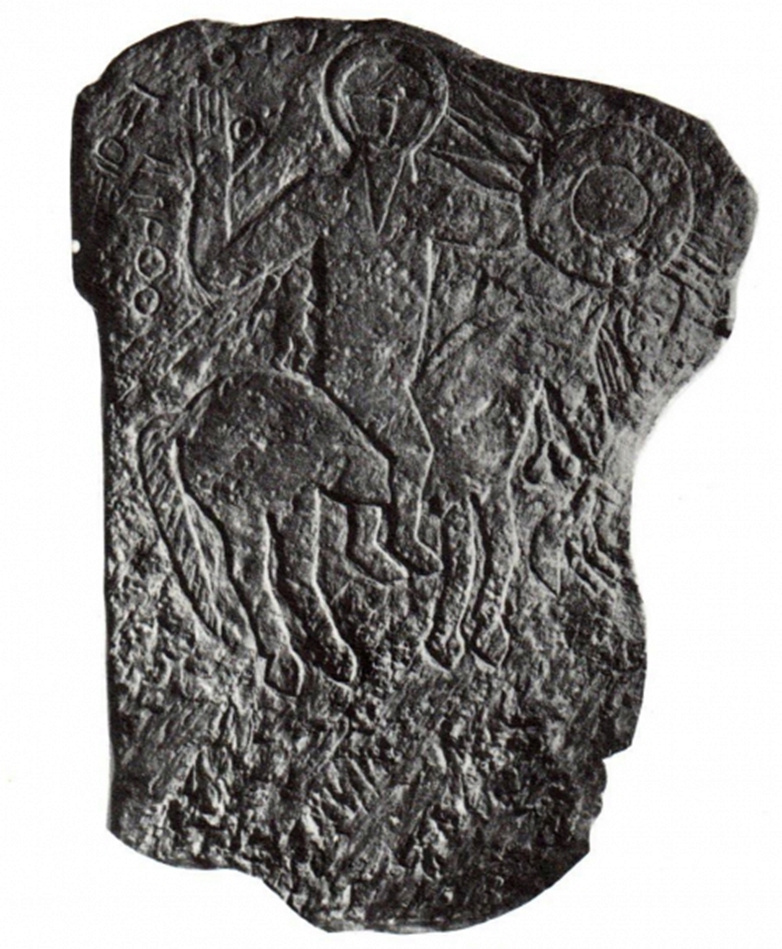....Abizar

Locality located on the southern slope of the coastal mountain range of Grande Kabylie, a few kilometers, as the crow flies, southeast of Tigzirt, where a stele of great interest was discovered in 1859. 1.25 m high and 1.10 m wide towards the top , it is in the form of a sandstone slab with fairly irregular contours, particularly on the right.
A man is depicted on horseback and armed. The man whose face and torso are in a frontal position is placed in the middle of the stele. With his left hand extended towards the front of the horse, he holds three spears and a round shield, in the center of which an incised circle suggests the existence of a bump. The right hand is raised: between the four fingers together and the thumb, a small round and hollow object is drawn in which we wanted to see either a throwing weapon (ball of stone or iron) or an offering (in particular a currency ) ? The face is round, very simplified. A light bead surrounds it: natural or artificial hairstyle? The man is bearded and this beard is very sharp.

In front of the horse, in the little space left free, run a dog and an ostrich, placed at two different levels. Between the rider's arm and the horse's rump, there is a small figure who brandishes a scepter or a club and who appears to be moving, because of the arrangement of his legs. A pendant with two balls adorns the horse's neck.
The very flat relief is obtained by scissor strokes, the trace of which is still visible in places and although the stylization is very advanced, certain details have nevertheless been clarified: such as the horse's mane and tail.
To this stele were added others with a similar or similar iconography. One of them comes from Bon Djemaa (douar Yaskren), approximately 6 km southwest of Abizar. The stele is broken into two pieces. We can clearly see the rider and his horse. The rider has his right hand raised. Two arrowheads – vertical, here – indicate that he brandished them with his left hand; perhaps he also had a shield. P. Vuilleumier noted that, in the right hand, is the same round object as in Abizar. Behind the rider, a figure is standing; he also raises his right hand. Unlike the little character of Abizar, he has long clothing. Technically, the sculpture is similar to that of Abizar by “combined chiseling and staking”.
Source : websites

